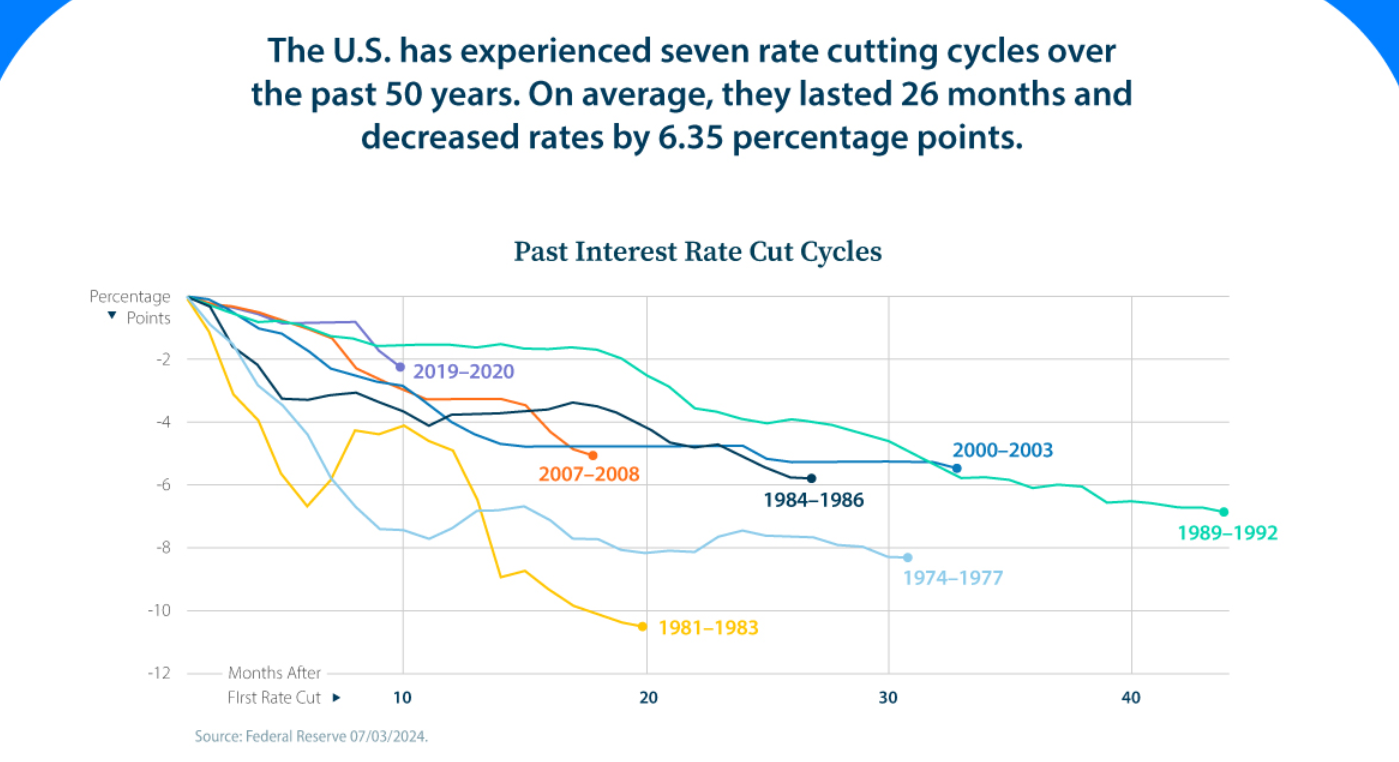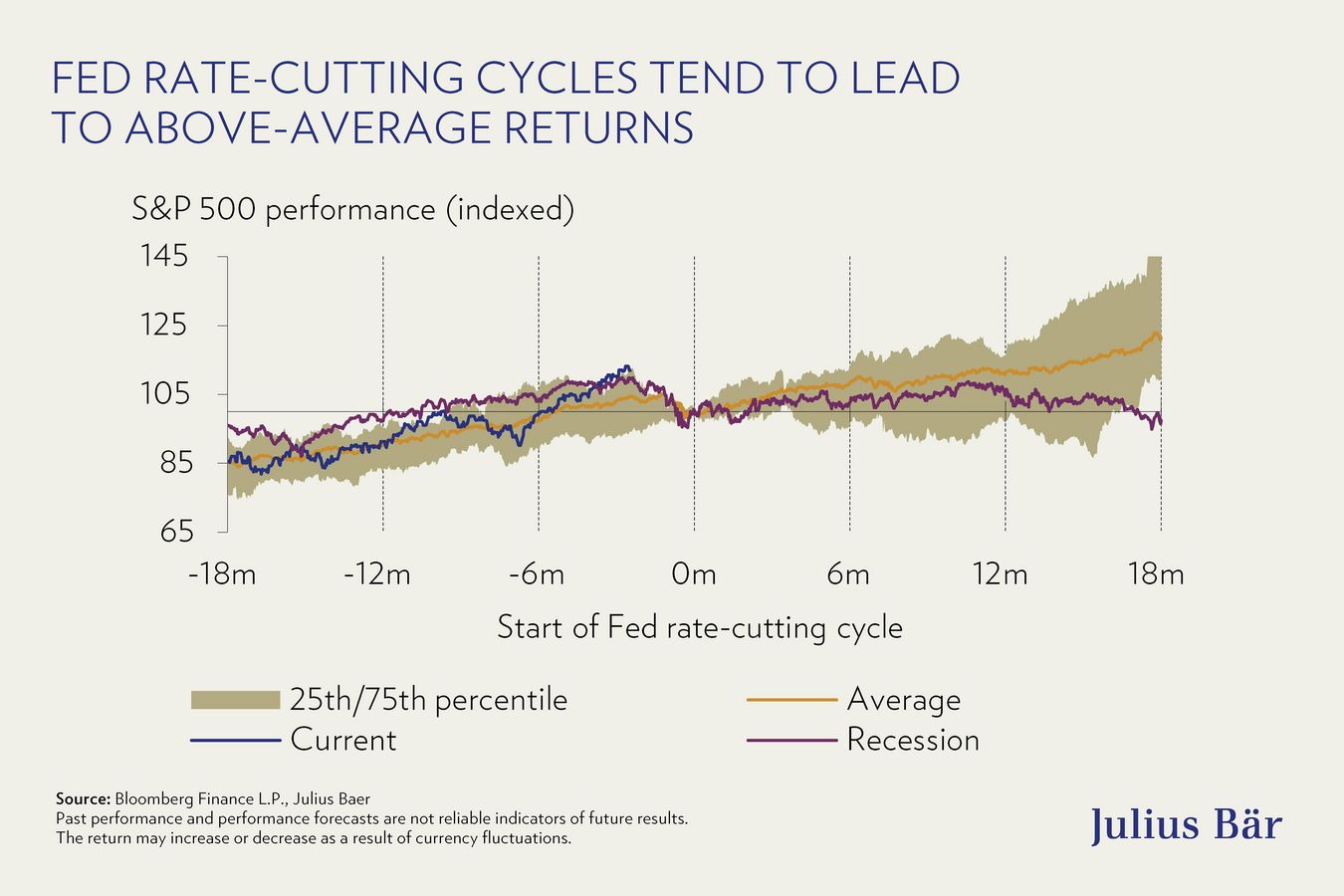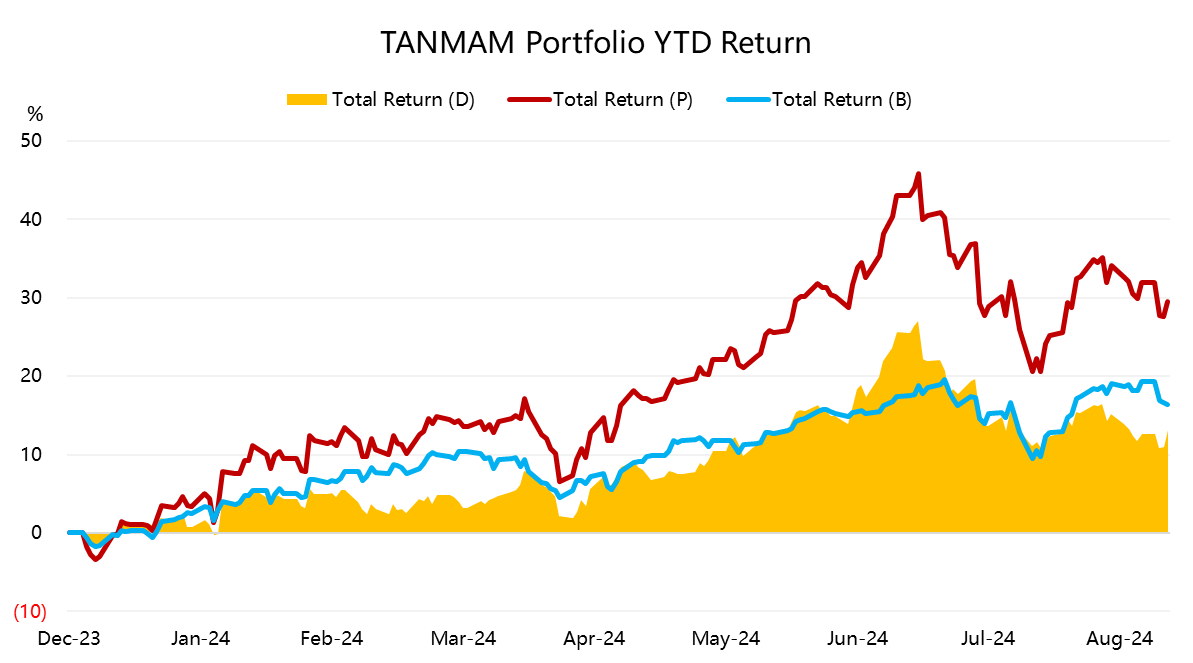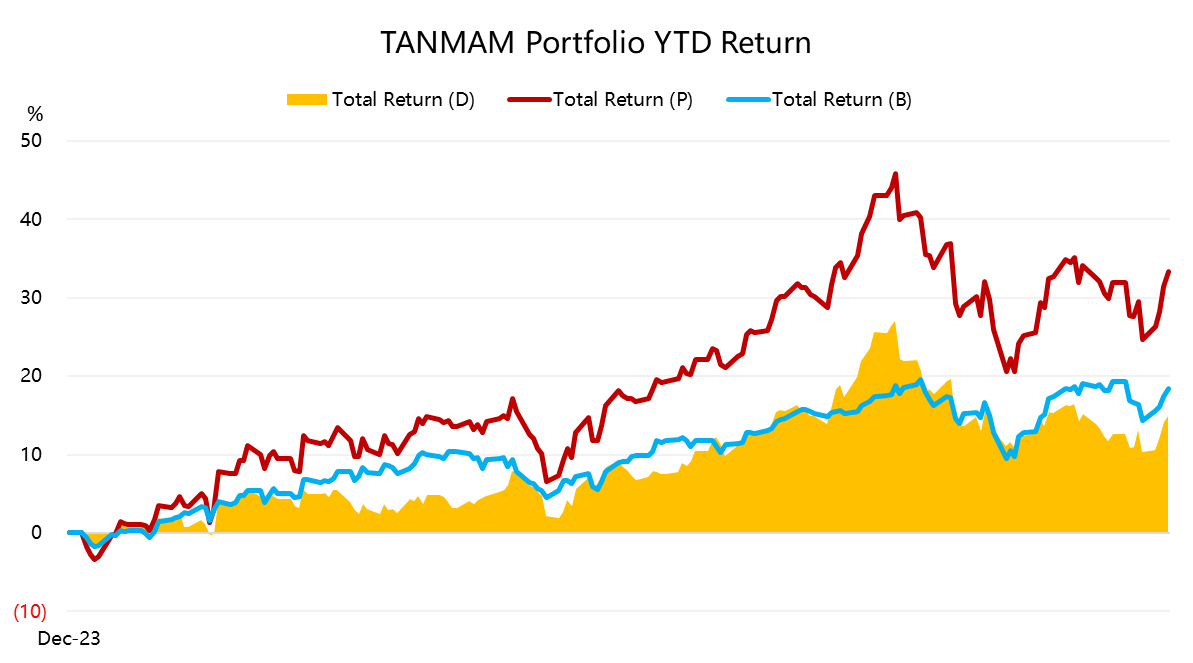BIG TECH WEEKLY | How's Techs In Non-Recessionary Rate Cuts Cycle?
Big-Tech’s Performance
This week's market was, in four words, a "comeback".After last week's jobs report, the entire market began to expect the first rate cut and priced in a different "recession or no recession".Risky and safe-haven assets took turns in the flow of funds, and as a result, volatility rose in the market.
But this week's strength in tech stocks, such as Tesla's FSD expectation boost, Apple's launch superstar, and NVIDIA's Jen-Hsun Huang reiterating the market's strong demand for AI in his talk, have all rekindled investor sentiment towards tech companies.
The market is now implying that the Fed, by December, will cut rates by 100 basis points, and by June next year by more than 200 basis points to around the 3% level.
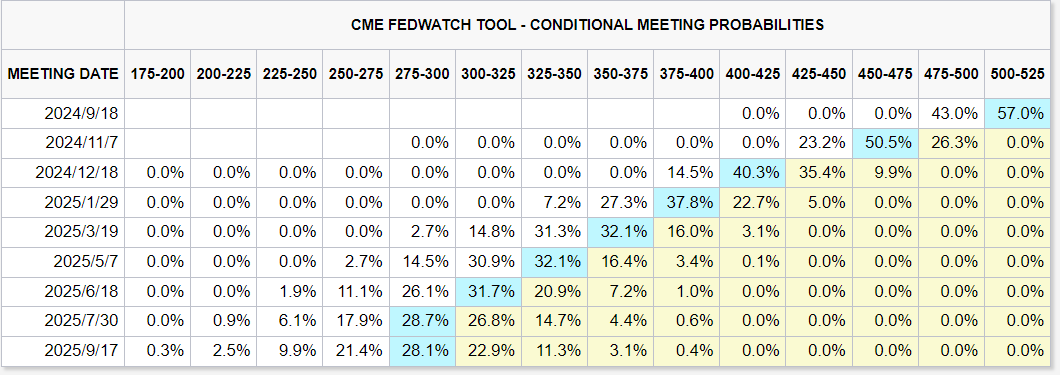
Big-Tech’s Key Strategy
Tech Stocks in a Rate Cut Cycle
The interest rate market's implied expectations for a September rate cut also swung widely this week, from a 75% probability of a 25 bps rate cut after the jobs report, to a near 90% probability of a 25 bps rate cut after the CPI came out, before picking up to a 57% probability of a 25 bps rate cut on Thursday after the return of risk sentiment, but historically, a 50 bps cut for the first time has been rather less of a good thing, implying higherrecession expectations.
If we don't think of the current rate cuts as "recessionary" for a moment, then non-recessionary rate cuts typically have positive outcomes for the tech sector, including:
Boosting growth: Lower interest rates reduce the cost of financing, allowing technology companies to invest more in innovation and expansion.Companies can borrow at lower rates to fund R&D projects.
Improved valuations: centered on a lower discount rate, tech companies benefit from a lower discount rate applied to their earnings and cash flows.
Improved Sentiment: In a stable economic environment, rate cuts are sentiment-enhancing and will increase risk appetite and inflows into technology stocks.
The tech sector has always done well in "non-recessionary rate cut" cycles. Here's how XLK has performed in the last 6 rate cut cycles, with the exception of the 2001 dot-com bubble and the 2008 subprime crisis, all of which saw XLK gain more than 25% a year later.

The very clear need for Big Tech to expand right now is huge capital expenditures on AI.Compared to growth companies, big tech companies can carry out capital expenditures without having to go through financing because they have strong enough cash reserves.But that doesn't mean big tech companies don't have to raise capital.
Since big tech companies have higher credit ratings, they can issue debt at lower interest rates after the rate cut, thus optimizing the company's Debt/Equity Ratio and optimizing the company's capital structure, which in turn will help the company's value increase more.
The sensitivity of debt level to interest rates is also positively correlated, in addition to the three factors stated above
M&A activity within the industry: high interest rates and stricter scrutiny have forced tech companies to be more cautious in terms of mergers and acquisitions, while interest rate cuts have helped business-to-business mergers and acquisitions.
Shift in corporate strategy: strategic buyers in the tech sector, especially primary market investors, are more sensitive to the level of interest rates, especially when there is also the prevention of systemic risk on the one hand.
Of course, interest rate cuts are only one of the signals sent to the market as a matter of monetary policy; fiscal policy is just as important.In an election year, uncertainty about fiscal policy is high.Until specific policies come out, the market is still likely to be cautious even if the Fed starts easing.
Big-Tech Weekly Options Watcher
NVIDIA was the resounding star of the week, with Jen-Hsun Huang mentioning a few key points in a conversation at Goldman Sachs' Tech Forum: that Blackwell is in high demand, that the pace of innovation in AI computing will continue to accelerate, and that NVIDIA will realize significant performance improvements every two years, among other things, as the market's enthusiasm for AI returns.
Looking at the options market, however, is not particularly optimistic for the time being.Although the open in-the-money and at-the-money Call orders are increasing (speculative sentiment is increasing) in several recent options, such as September 20 and September 27, the out-of-the-money Call throws are heavily concentrated at the former highs of 130 or so, implying that the market's Cover in this position has not been lowered, and that bets on a "unilateral bull market" in a volatile market are not high.The stakes are not high for a "one-sided bull market" in a volatile market.At the same time, orders for PUT are in the 110-120 range, suggesting that a selloff is also considered unlikely.Next up is a trade in vibrational volatility.
Big-Tech Portfolio
The Magnificent Seven form a portfolio (the "TANMAMG" portfolio) that is equally weighted and reweighted quarterly.The backtest results are far outperforming the $S&P 500(.SPX)$ since 2015, with a total return of 2009.65%, while the $SPDR S&P 500 ETF Trust(SPY)$ has returned 221.99% over the same period, once again pulling ahead.
Big tech stocks were strong this week, with the portfolio returning 33.36% year-to-date, outperforming the SPY's 18.38%.
The portfolio's Sharpe Ratio over the past year has fallen back to 1.8, matching the SPY's 1.8, and the portfolio's Information Ratio is 1.1.
Disclaimer: Investing carries risk. This is not financial advice. The above content should not be regarded as an offer, recommendation, or solicitation on acquiring or disposing of any financial products, any associated discussions, comments, or posts by author or other users should not be considered as such either. It is solely for general information purpose only, which does not consider your own investment objectives, financial situations or needs. TTM assumes no responsibility or warranty for the accuracy and completeness of the information, investors should do their own research and may seek professional advice before investing.
- Pinkspider·2024-09-14Lower interest rate ain’t good for bank though. And there’s many people unable to pay on time for their finance etc . It’s a two way sword.2Report


